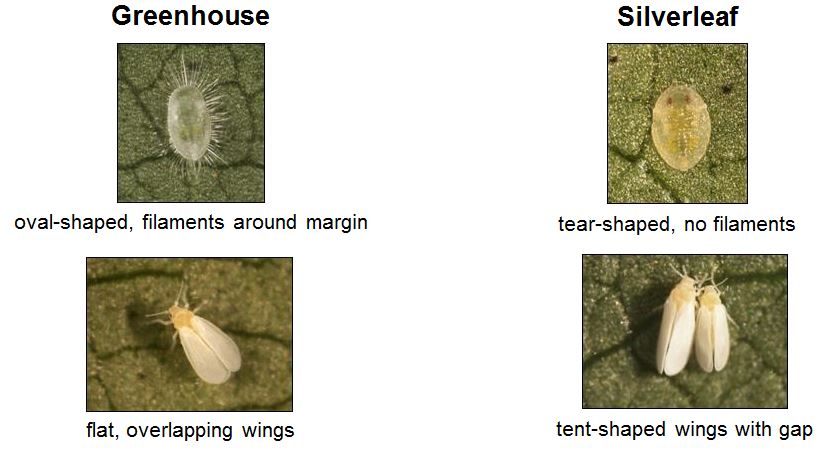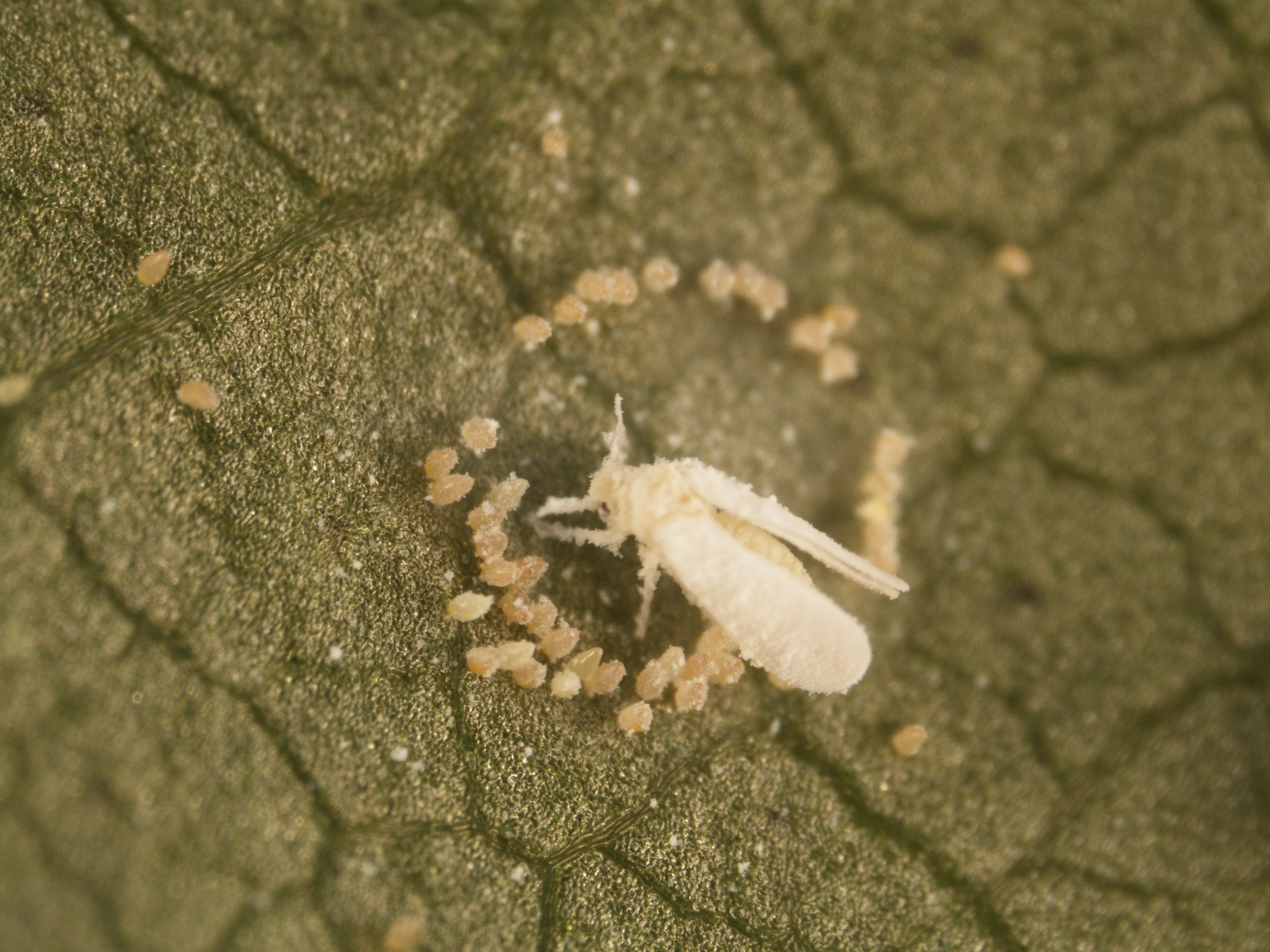Over the past couple of weeks there have been reports of whitefly adults infesting canola in the Central West and Lachlan regions of NSW. This is not an occurrence that has been recorded before, so we don’t know conclusively what the outcome will be of these infestations. What I have done is pulled together information on whitefly that will help you make an assessment of what is happening in your crop, if you have a whitefly infestation. Thanks to Richard Sequeira (Research Scientist, DAFF Queensland) for his insights into whitefly behaviour and potential impact on crops.
Where are the whitefly coming from?
It is likely that the whitefly are Silverleaf Whitefly, and are moving out of cotton crops as they are defoliated and picked. The warm summer and autumn have allowed whitefly numbers to build up in cotton crops this year. Large scale movement of whitefly from cotton was observed in Emerald during the early years of outbreaks. Whitefly will fly some distance themselves, but can also be carried long distances by wind. It is less likely that they are coming from weed hosts in these high densities.
What impact will the whitefly have on my canola (and possibly other broadleaf winter crops)?
We consider it highly unlikely that infestations of adult whitefly will cause significant crop damage. We do not know how good a host canola is for whitefly, although horticultural brassicas (e.g. broccoli) are good hosts. Regardless of how good a host canola may be, consider the following:
1) Whitefly is a warm weather species, and does not persist during cold weather. Even if daytime temperatures are warm, the cool nights will slow the rate of feeding and reproduction; slowing the potential impact on the crop.
2) Adult whitefly will live for 2 to 3 weeks under cooler autumn conditions (no more than a week in summer).
3) Influxes of adults may continue for some time, which will make it difficult to determine whether it is survival or immigration contributing to the population.
4) The feeding done by juvenile whitefly (nymphs) is far more damaging to plants than adult feeding. If the whitefly are not reproducing, the potential for crop damage is lower.
5) Eggs may be laid on plants that are unsuitable for the survival of nymphs. The presence of eggs on canola, lupins, faba beans etc does not necessarily mean that the whitefly population is going to establish in that crop.
What to look for to make an assessment of the damage potential of a whitefly infestation in winter crops.
1) Confirm identity of the whitefly. Use the images below to examine adult and juvenile whitefly and determine if they are greenhouse or silverleaf. Greenhouse are significantly less damaging than Silverleaf.
2) Is there evidence of feeding? Look for shiny, sticky speckling on lower leaves. This is honeydew that is secreted by both adults and nymphs as they feed on the plant. The more honeydew, the more feeding is going on.
3) Look for signs of crop stress: wilting, reddening in canola, retarded growth. Be realistic about what may be being caused by the whitefly, and what may be moisture stress.
4) Look for the presence of eggs and nymphs on the undersides of leaves (see pictures below). A handlens or microscope will be necessary to see these on the leaves. Select the lowest leaves on the plants; those that have been exposed to the adult whitefly the longest.

Distinguishing Greenhouse and Silverleaf Whitefly nymphs and adults.

Silverleaf whitefly adult with eggs.
